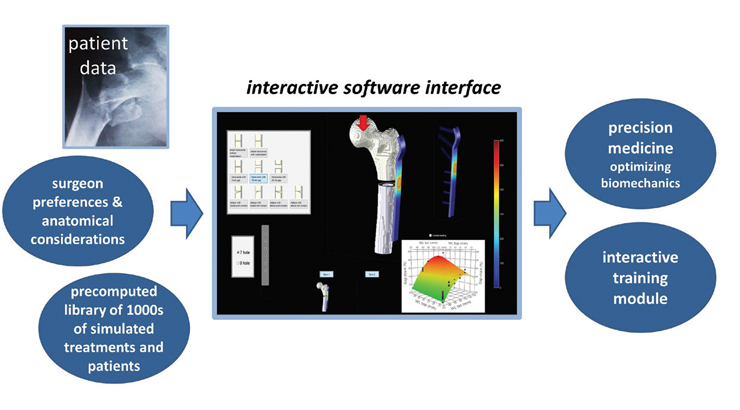Simulation Software for Improved Orthopedic Surgical Procedures
ID# 2015-4333
Technology Summary
This technology utilizes computer-based engineering to simulate and optimize bone fracture repairs through the use of interactive, three-dimensional models personalized for each patient. This technology draws on big data and uses robust statistical methods to generate personalized models of fractured bones that orthopedic surgeons can use to enhance patient outcomes. Prior to surgery, this technology presents surgeons with the fracture repair designs most likely to result in optimal patient outcomes. An interactive model shows how the recommended repair design will impact distribution of physical forces on the implants and bone as it heals. The technology features a training module that orthopedic residents can use to learn how their choice of fracture repair design impacts the risks of complications following surgery.
Application & Market Utility
In orthopedics, mechanics play an important role in determining clinical outcome—implants can fail inside the body, and stability greatly affects healing—but these 3-D mechanics can be complex. Surgeons operate on patients based largely on experience and intuition, sometimes leading to suboptimal treatments, revision surgeries, and time inefficiencies in planning and procedure execution in the operating room. This software enables improved quality and efficiencies in fracture fixation and potentially other procedures.
Next Steps
Seeking research collaboration and licensing opportunities.

